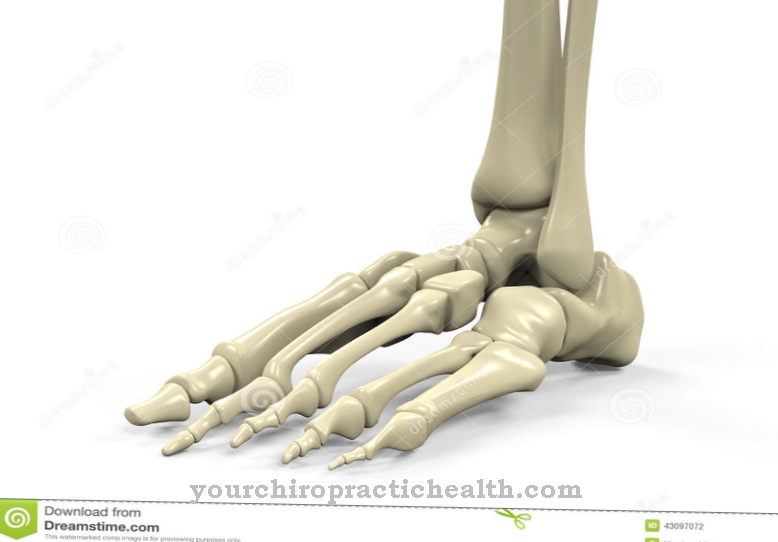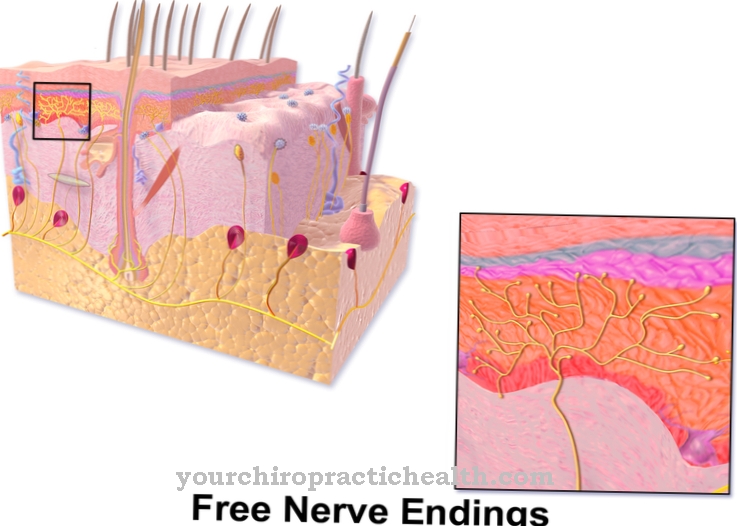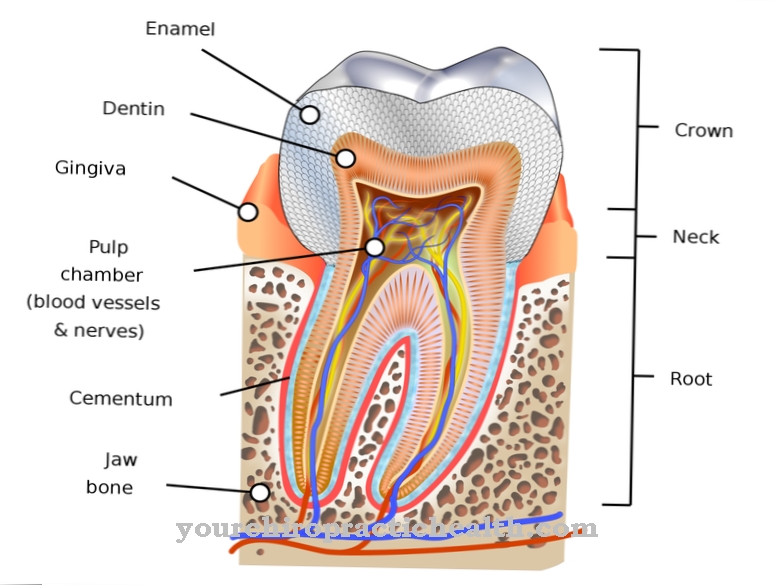The Adenohypophysis as part of the pituitary gland is an important endocrine gland. It is responsible for producing a number of different hormones. Disturbances in the function of the adenohypophysis lead to typical diseases that are caused by a deficiency or excess of certain hormones.
What is the adenohypophysis?
The adenohypophysis is called the Anterior pituitary lobe and is the greater part of the pituitary gland. In contrast to the neurohypophysis, it is not part of the brain. Thus the pituitary gland, composed of adenohypophysis and neurohypophysis, is not a single organ. It is just a functional unit of two different parts.
The adenohypophysis emerges from the Rathke pouch, a protuberance in the pharynx. As the fetus grows, this protrusion is pinched off the mouth and develops into the anterior pituitary lobe. The anterior pituitary lobe is structured like a typical endocrine gland. In doing so, it forms a series of hormones that either function as control hormones or act directly on the success organ. However, the hormone production of the adenohypophysis is in turn controlled by releasing or inhibiting hormones of the hypothalamus.
Anatomy & structure
The adenohypophysis is made up of three parts, the anterior lobe (pars distalis), the intermediate lobe (pars intermedia) and the funnel lobe (pars tuberalis). The anterior lobe, as the anterior part of the pituitary gland, contains acidophilic, basophilic and chromophobic cells. These cell differences result from their different colorability by acidic or basic dyes.
The acidophilic cells can be colored red with an acidic dye and the basophilic cells blue or purple colored with a basic dye, while the chromophobic cells cannot be colored. The acidophilic and basophilic cells, unlike the chromophobic cells, are responsible for the production of a number of hormones that fulfill different functions.
Chromophobic cells include stem cells as well as used acidophilic and basophilic endocrine cells that no longer produce hormones. The intermediate lobe (pars intermedia) is located between the anterior lobe and the neurohypophysis. It is responsible for the production of the melanocyte-stimulating hormone (MSH). So far nothing is known about the function of the funnel flap which surrounds the pituitary stalk. The structure of the adenohypophysis makes it an important switching center for the control of hormonal processes in the organism.
Function & tasks
The adenohypophysis produces both glandotropic (glandular) and nonglandotropic hormones. The glandotropic hormones have important controlling functions. They regulate the hormone production of other endocrine glands. TSH (thyroid stimulating hormone), ACTH (adrenocorticotropic hormone), FSH (follicle stimulating hormone) and LH (luteinizing hormone) are formed as glandotropic hormones in the adenohypophysis. TSH stimulates the production of hormones in the thyroid gland and thus influences the energy consumption of the metabolism.
ATCH stimulates the adrenal gland to produce glucocorticoids, mineral corticoids and sex hormones. The FSH acts on the gonads and controls egg cell growth in women and sperm formation in men. Finally, the LH also acts on the gonads and, together with the FSH, is responsible for the maturation and formation of the sex cells. The non-glandotropic hormones produced in the adenohypophysis include STH (somatotropic hormone or somatropin), prolactin and MSH (melanocyte-stimulating hormone or melanotropin).
As a so-called growth hormone, the STH controls the growth of the organism. Somatropin deficiency leads to short stature, while an excess of STH leads to giant stature (hypersomia). The hormone prolactin in turn controls breast growth and milk production during pregnancy and lactation. The non-Englandotropic hormone MSH (melatropin) is responsible for the formation of pigment-forming melanocytes. It also limits the fever reaction and is involved in controlling the feeling of hunger and sexual arousal. The mode of action of the hormones should, however, be viewed in the overall context. The function of the adenohypophysis as part of a complex hormonal system is in turn controlled by the releasing and inhibiting hormones of the hypothalamus.
Diseases
Dysregulation in the adenohypophysis can result in various hormone-related diseases. Since the complex endocrine system is precisely coordinated, a deficiency or an excess of a certain hormone can have serious health consequences. There are typical endocrine diseases for every single hormone. For example, TSH regulates the production of hormones in the thyroid gland.
If there is a lack of TSH, too few thyroid hormones are produced, which can lead to secondary hypothyroidism. The metabolism slows down and the physical and mental performance decreases. There is also weight gain. If too much TSH is produced, the thyroid gland is stimulated to produce large amounts of thyroid hormones. Hyperthyroidism and its typical symptoms occur. Disorders in TSH production can be triggered by adenomas (benign tumors) or autoimmune diseases of the adenohypophysis.
Elevated ACTH levels lead to an increased production of cortisol in the body, with the result that Cushing's disease develops with a weakening of the immune system and the development of a characteristic trunk obesity. Too low ACTH values are often the cause of the so-called Sheehan syndrome with the reduction in many body functions. In addition to a malfunction by the hypothalamus, the cause of the hormonal disorder can be directly caused by a disease of the adenohypophysis.
The non-Englandotropic hormone somatropin, in turn, leads to short stature, increased body fat mass with reduced muscle mass and low bone density. Life expectancy is reduced. Overproduction of somatropin leads to giant growth. Disturbances in the function of the adenohypophysis cause endocrine diseases that can affect energy and mineral metabolism, growth, milk production, sexual functions and fertility.
Typical & common diseases
- Hyperthyroidism
- Hypothyroidism
- Cushing Syndrome
- Short stature
- Huge growth












.jpg)



.jpg)










.jpg)
